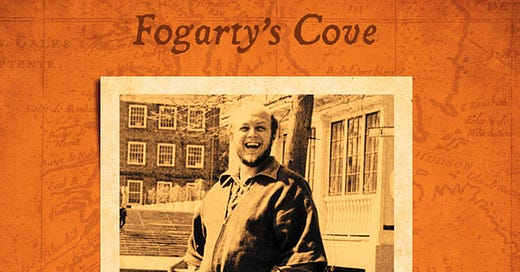Genre of the Day - Maritime Canadian Folk
Album of the Day - Fogerty’s Cove by Stan Rogers (1976)
After yesterday's all-American fest, it’s only right that the random genre of the day reorients us towards some international friends. However, we’re not going too far—like birds for the summer, we’re flying our listening up north for what I believe is our first Canadian genre of the year. Tucked away above Maine, which is already something like the Alaska of the United States in terms of its natural beauty and relative isolation, are the maritime provinces of Canada with eminently prestigious-sounding names: Prince Edward Island, Nova Scotia, and New Brunswick. Today, we hear their rendition of folk music, which draws from the vastness of the ocean on the edge of the Atlantic.
The Atlantic as a pathway between civilizations looms large in the Maritimes’ history, as the Mi'kmaq Nation became one of the first indigenous peoples in the Americas with whom European settlers interacted—not Christopher Columbus in Hispaniola, but Leif Ericsson and the Vikings who briefly explored Vinland. Maritime Canadian folk is a perfect musical medium for anyone who yearns for the seas. Sea shanties had a moment on TikTok a few years back, and videos of cargo ships diving into treacherous, sky-scraping waves often make the rounds set to more ominous renditions of these tunes, but they are also one of the most important expressions in Maritime folk music. Working on cargo-carrying ships in the 1850s was far from easy money, and workers who had immigrated from Scotland and Ireland coordinated and intensified their efforts in group song.
This tradition has stayed strong in the Maritime provinces as a historical center of ship-building and due to the integral nature of fishing to its economy. As often with folk music, nostalgia suffuses these songs, but rooted in the very specific vision of a bygone, romantic age of economic prosperity in the provinces when ship-building, lumber harvesting, manufacturing were robust. Anne of Green Gables was also set in Prince Edward Island; there’s a Victorian, sepia-toned quality to some of its folk artistry in addition to rugged work and maritime anthems. Many tunes incorporate the fiddle as another legacy of Scottish and Irish heritage. Others draw from Acadian French traditions that survived the great zydeco migration south.
Stan Rogers did not grow up in the Maritimes, but he spent his summers visiting Nova Scotia and spent his musical career dealing in imaginaries and appreciations of its natural beauty and depth of traditions. He cheekily rejects his home state of Ontario in “I’d Rather Live by the Sea,” the fiddle and his voice forming a winsome harmony. There’s an occasional hokeyness to tunes like “Fogarty’s Cove,” but other arrangements like the dramatic, subtle tremolos of the strings and wandering guitar enrich the gripping tale of “The Maid on the Shore.” The Celtic intonation and the multipart, a capella harmonies of “Barrett’s Privateers,” a song Rogers wrote himself that sounds transported directly from the 1778 journey it describes, balance his husky lead’s devastation and isolation. The singer-songwriter recalls traditions like forecastle songs penned by sailors in their quarters, yearning for life back home between back-breaking work. But the sea always calls again: “Make and Break Harbour,” a protest of fishing trawlers that would surely please anti-industrialized fishing activist Björk, urges young people to go out there and take the fisherman’s way. Perhaps I shall.







He was a pure, unadulterated Canadian genius.